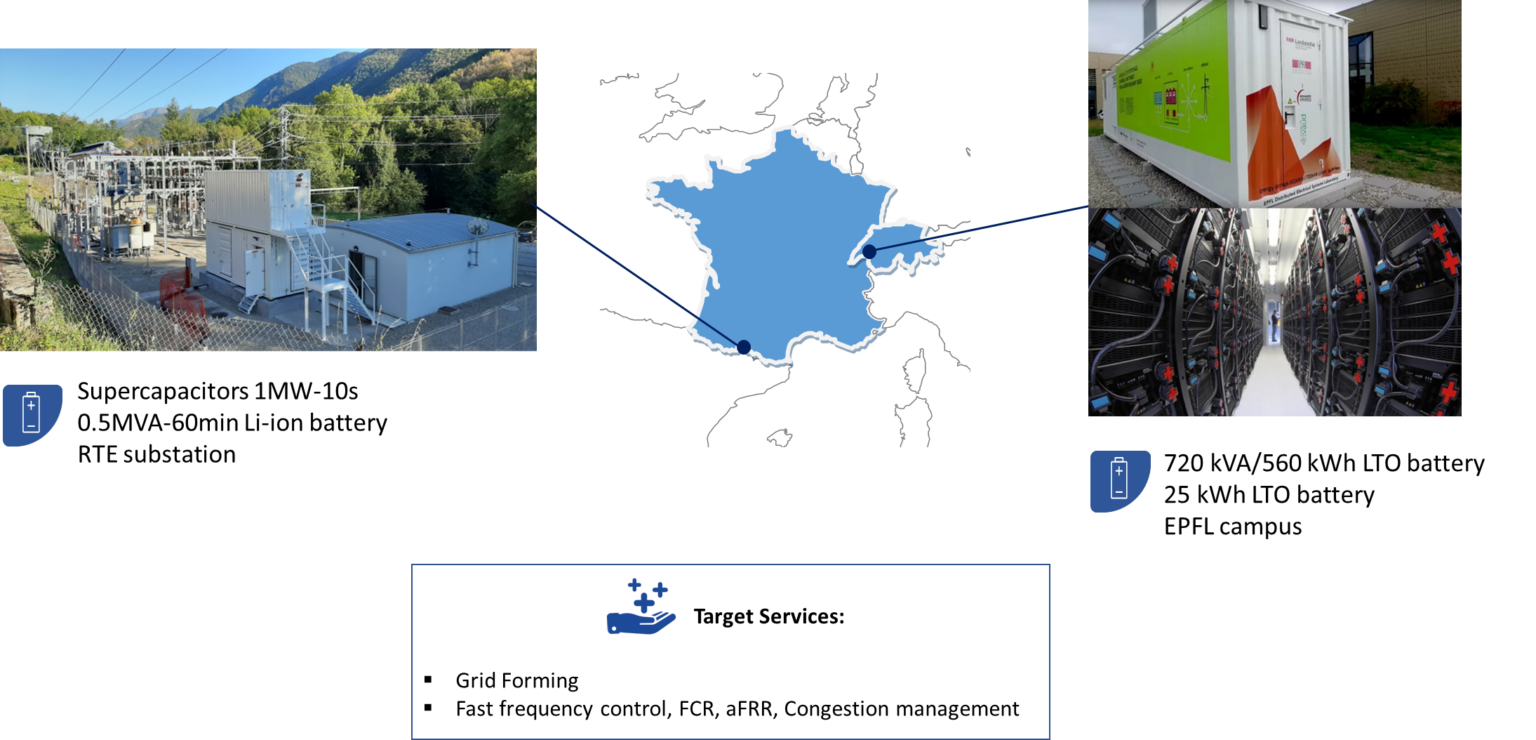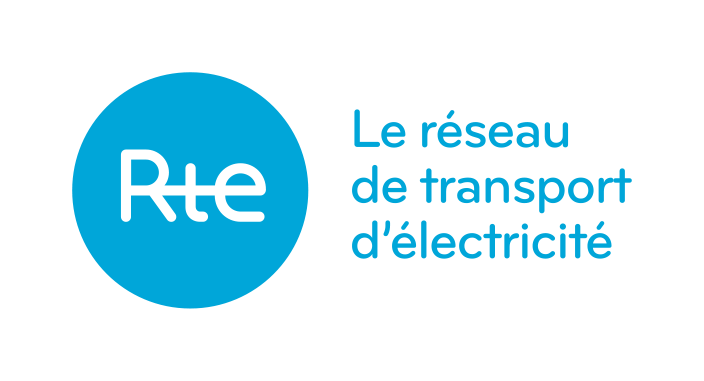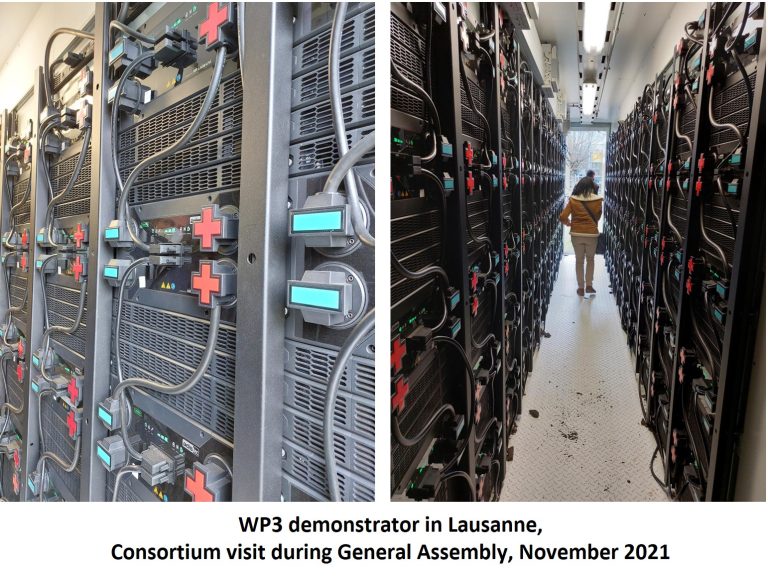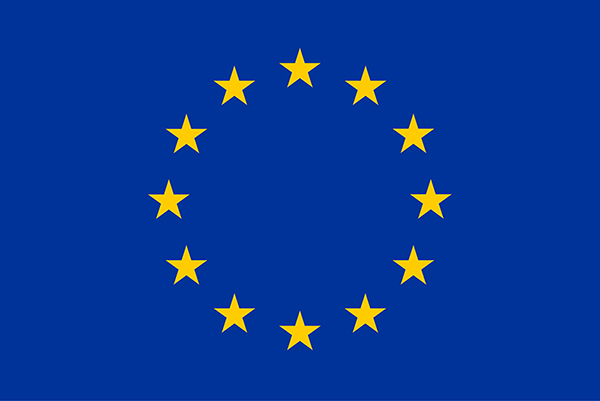Back to Osmose Work Plan | See on Demos map
WP3 – Grid forming for the synchronisation of large power systems by multi-service hybrid storage
![]() Demo overview
Demo overview

-
- Proof of concept of the synchronisation service on a distribution and on a transmission system
- Multi-service installations
- Portability across multiple hardware architectures
![]() Partners involved
Partners involved


![]()
WP Leader Contact: Carmen CARDOZO, RTE
![]() Context
Context
Why grid forming?
Today, inverters are “grid following” : they behave as current sources and follow the voltage waveform of the network. With more inverter-based generation, inverters have to be “grid forming” to ensure the robustness of the system. Specific control algorithms were designed in the H2020 Migrate project but have never been tested on real environments.
Why hybrid storage?
Hybrid storage, like in the RTE/Ingeteam demo, includes supercapacitors and a battery. The supercapacitors provides the very fast power peaks required by grid forming. The battery can sustain longer energy needs, especially for other services than grid forming. This could also be used as a proof for upgrading existing battery to grid forming without additional constraint on the battery .Otherwise, fast batteries (Lithium-Titanate) like in the EPFL demo could be used.
Why multiservices?
To assess the cost of grid forming we need to study how this function synergizes with other traditional services, by sharing common hardware and avoid an oversizing
![]() Objectives
Objectives
- Test the robustness and effectiveness of grid forming control in two real environments
- Assess multi-services compatibility
- Define DC power and energy management strategies
- Test the portability of the control strategies over different hardware platforms
![]() WP status (December 2021)
WP status (December 2021)
WP3 experimentally validated a grid-forming control of battery energy storage systems to provide multiple services, using a grid-scale 720 kVA/560 kWh BESS connected to a 20 kV distribution feeder of the EPFL campus, hosting stochastic prosumption and PV generation forecasts. The evaluation based on the proposed metrics showed the superior performance of grid-forming control, compared to the grid-following one. The impact of grid-forming BESSs on frequency regulation in low-inertia bulk power grids was assessed via real-time simulations: results show that grid-forming controlled BESS outperforms grid-following one in improving the system frequency containment.
WP3 is currently developing some recommendations on grid forming capability specification, testing and compliance verification.

![]() Deliverbales and publications for download
Deliverbales and publications for download
- Deliverable 3.1 – Multi-service control algorithm for converters describes a scheduling and control framework for a battery energy storage system to provide simultaneously multiple services to the electrical grid. Its objective is to maximize the battery exploitation from these services in the presence of uncertainty.
- Deliverable 3.2 – Overall specifications of the demos presents the technical description of the EPFL and RTE demos and defines Key Performance Indicators for each. It details Migrate control updates required for industrial implementation and simulation results. Different DC control strategies for power and energy sharing between the different DC components are also described and simulated. A modified version of the IEEE 39 bus system modelled in a real time simulation platform is detailed and provides a reliable benchmark with long term testing capabilities.
- You can go to the WP3 publications section in the OSMOSE ressource center



